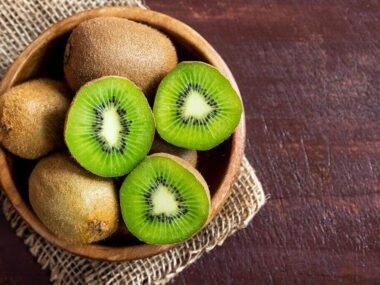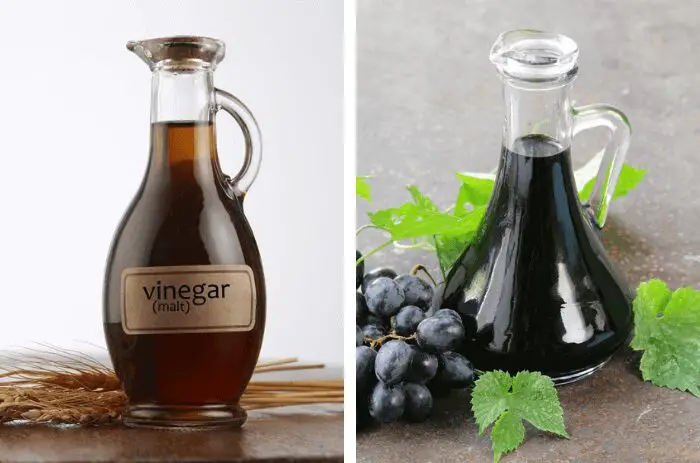Welcome to the enchanting world of legumes, where beans of all shapes, sizes, and flavors await your culinary exploration. Among these marvelous legumes, white beans stand out with their creamy texture and remarkable versatility in various cuisines. Today, we embark on a flavorful journey to demystify two closely related yet distinct white beans: cannellini beans and butter beans. So, let’s dive right in!
Cannellini Beans vs. Butter Beans: A Bean Showdown
Butter Beans
First on our bean radar are the infamous butter beans, also known as Lima beans. These beans bear a striking resemblance to their vibrant green cousins but come into their own when fully matured. You might also hear them referred to as Madagascar beans, wax beans, or chad beans.
Unlike their youthful, green counterparts, fully mature butter beans flaunt large, white or creamy seeds. Although they generally sport a coat of pristine white, don’t be surprised if you stumble upon specimens with the occasional purple or brown speckle – nature’s way of adding a dash of uniqueness.
In terms of shape, butter beans are flat and slightly oval, a feature that sets them apart from the more cylindrical cannellini beans. Butter bean plants exhibit both pole and bush varieties, boasting flattened, semi-circular pods housing typically 2-3 beans each.
In grocery stores, you’ll find butter beans available in both dried and canned forms. These versatile beans find their way into salads, stews, and soups, bringing along a creamy texture and a subtle, buttery essence to the dishes they grace.
Besides their culinary prowess, butter beans pack a nutritional punch. They’re brimming with protein, iron, magnesium, calcium, potassium, and a bevy of vitamins. Their starchy nature is complemented by a generous serving of dietary fiber, promoting digestive health. And here’s the bonus: they’re low in fats and cholesterol, making them a wholesome choice for a balanced diet.
Cannellini Beans
Now, let’s shift our focus to cannellini beans, also known as white kidney beans. These beans belong to the same bean species, Phaseolus vulgaris, which includes their reddish counterparts, the red kidney beans.
Cannellini beans earn their moniker “white kidney beans” from their kidney-like shape. They boast a creamy texture that’s celebrated in Italian cuisine, where they find their way into an array of dishes like soups, stews, and salads.
Cannellini bean plants prefer a bushy growth pattern, meaning they stand tall without the need for stakes. The pods cradle about 5 to 8 beans each, turning a sunny yellow when they reach maturity.
Much like butter beans, cannellini beans grace grocery store shelves in both canned and dried forms, catering to various cooking preferences. These beans shine thanks to their high content of soluble fibers and calcium, both champions of digestive health and bone strength. Plus, they share the low-fat, low-cholesterol bragging rights, making them an ideal fit for a health-conscious diet.
Spotting the Differences
Now that we’ve journeyed through the realms of butter beans and cannellini beans, let’s zoom in on the distinctions that set these two apart:
1. Seeds: Cannellini beans, scientifically known as Phaseolus vulgaris, sport a kidney shape, albeit smaller than their red kin. They’re smooth, shiny, and wear a creamy white coat. In contrast, butter beans, the mature version of Phaseolus vulgaris, flaunt larger, flat, oval seeds. Their coat can vary with occasional purple or brown speckles, depending on the variety.
2. Plants: Cannellini beans are bushy fellows, standing proud at 18-24 inches. Their pods turn a sunny yellow when ripe and have a smooth texture. Butter beans, however, come in both bush and pole varieties. Bush beans mimic cannellini beans in height, while pole beans reach for the skies, requiring support. The pods of butter beans are flattened and semi-circular, typically holding 2-3 beans each.
3. Flavors: Cannellini beans are celebrated for their creamy, delicate flavor, tinged with a hint of nuttiness. They maintain their smooth texture when cooked, making them the darlings of soups, stews, salads, and pasta dishes. These beans are also adept at absorbing flavors, making them ideal for dishes with bold seasonings and sauces.
4. Culinary Uses: While both beans can often be used interchangeably, there are certain culinary scenarios where one outshines the other. Cannellini beans find their calling in Italian cuisine, gracing classics like pasta e fagioli, minestrone soup, and Tuscan white bean stew. They’re equally at home in salads, purees, casseroles, or as a simple side dish, seasoned with herbs and olive oil. In contrast, butter beans find their niche in Southern and American cuisines, where they’re typically paired with smoked meats, onions, and garlic to accentuate their natural sweetness.
5. Nutritional Content: Nutritionally, cannellini beans and butter beans are quite similar. Both are rich sources of plant-based protein, dietary fiber, complex carbohydrates, and a medley of vitamins and minerals. They’re low in fat and free of cholesterol, making them welcome additions to a health-conscious diet. Cannellini beans lead the protein game, offering approximately 7 grams per half-cup serving, while butter beans provide around 6 grams. Both beans bring their unique nutritional benefits to the table, so you can’t go wrong with either choice.
In Summation: A Tale of Two Beans
As we draw the curtain on our bean adventure, remember that while cannellini beans and butter beans may share a color palette, their unique characteristics make each a star in its own right. Whether you’re drawn to the creamy elegance of cannellini beans or the sweet allure of butter beans, these legumes offer a treasure trove of flavor, nutrition, and versatility to elevate your culinary creations. So go ahead, embrace the world of white beans, and let your taste buds savor the magic these beans bring to your favorite dishes!



